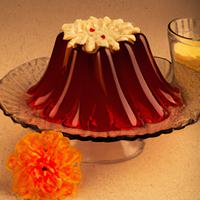
1 serving (100 grams) contains 120 calories, 2.0 grams of protein, 3.0 grams of fat, and 20.0 grams of carbohydrates.

Log this food in SnapCalorie

Nutrition Information
Calories |
285.7 | ||
|---|---|---|---|
% Daily Value* |
|||
| Total Fat | 7.1 g | 9% | |
| Saturated Fat | 4.8 g | 24% | |
| Polyunsaturated Fat | 0 g | ||
| Cholesterol | 11.9 mg | 3% | |
| Sodium | 321.4 mg | 13% | |
| Total Carbohydrates | 47.6 g | 17% | |
| Dietary Fiber | 0 g | 0% | |
| Sugars | 40.5 g | ||
| protein | 4.8 g | 9% | |
| Vitamin D | 0 mcg | 0% | |
| Calcium | 190.5 mg | 14% | |
| Iron | 0.5 mg | 2% | |
| Potassium | 357.1 mg | 7% | |
* Percent Daily Values are based on a 2,000 calorie diet. Your daily values may be higher or lower depending on your calorie needs.
Food Attributes
Source of Calories
About Jell-o pudding
Jell-O Pudding is a creamy, sweet dessert that has become a staple in American cuisine. Originating in the United States under the Jell-O brand, it is typically made from sugar, cornstarch, flavoring agents, and milk, with some versions including gelatin. It comes in a variety of flavors, including chocolate, vanilla, and butterscotch, and is either prepared by cooking or offering as an instant mix. While it is a source of quick carbohydrates, its nutritional value is limited due to added sugars and minimal essential nutrients. Some sugar-free or low-fat options are available, which can make it a slightly healthier choice. Jell-O Pudding is often enjoyed on its own, as a layered dessert, or included in recipes. While it should be consumed in moderation, it remains a convenient and satisfying treat for those seeking a nostalgic or quick dessert option.



